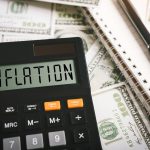Reviewed by Chip Stapleton
When gasoline prices rise, consumers certainly notice. That attention often makes rising gasoline prices (less so falling ones) a perennial hot-button political issue, with the oil industry and politicians occasionally trading blame for the rising costs.
But there’s no single person who controls gas prices. Instead, gas prices are controlled by the market forces of supply and demand. Here, we take a look at the factors that affect the price of gasoline.
Key Takeaways
- Gasoline prices are determined largely by the laws of supply and demand.
- Gasoline prices cover the cost of acquiring and refining crude oil as well as distributing and marketing the gasoline, in addition to state and federal taxes.
- Gas prices also respond to geopolitical events that impact the oil market.
- Because consumers are slow to respond to changes in gasoline prices, they can move rapidly to balance supply and demand.
- Gas prices are so noticeable their rise often sparks arguments about who is to blame.
Oil Prices: The Crude Reality
Crude oil is the raw commodity used to make gasoline, so crude oil prices play the most important role in setting gasoline prices. According to the U.S. Energy Information Administration, the price of crude oil accounted for 52.3% of the price of gasoline between 2014 and 2023, on average. But, that average conceals wide fluctuations. In 2020, with crude prices down sharply amid the COVID-19 pandemic, crude accounted for just 43% of gasoline costs. But in 2022, with the Russian invasion of Ukraine, both oil and gas prices shot up again.
Crude oil is the most widely traded global commodity and among the most widely used. Crude prices trade in deep and liquid global markets. The market power of groups, including OPEC and international oil companies, has diminished over time with the development of alternative sources of supply and growth in demand from developing countries.
Not all grades of crude oil are equally useful for making gasoline. Lighter crude—oil that is less dense—will produce more gasoline per barrel than heavy crude. Sweet crude, meaning better-quality grades with lower sulfur content, is preferable to sour crude, which has more sulfur.
At the local level, the preferable crude grade is one likely to yield the most profit given the processing capabilities of a given refinery. Costlier light sweet crude is no prize for a refinery equipped to process heavy sour grades.
Refining Has a Price
No matter the crude grade, putting it into the gas tank of a car won’t get you anywhere but to a repair shop. Hence the need to pay refiners to distill crude oil into gasoline and mix in the required additives.
From 2014 through 2023, refining costs and profits accounted for 15.3% of the retail price of gasoline, on average. Gasoline production costs vary with seasonal and regional blending requirements designed to reduce pollution, as well as the cost of required additives including ethanol.
The price of wholesale gasoline partly reflects supply and demand factors distinct from those for crude oil. For example, U.S. gasoline prices typically rise in the summer in response to higher demand. U.S. refining capacity increased around 2.75% in the period spanning from August 2014 to August 2024, lagging growth in demand. Increased U.S. exports of gasoline have further constrained domestic supply.
When gasoline prices rise, suppliers tend to get blamed. When gas prices rose to all-time highs in 2008, a CNN poll at the time found that 62% of respondents blamed rising gasoline prices on “unethical behavior” by suppliers, versus 32% who cited supply and demand. In remarks made by the American Fuel and Petrochemical Manufacturers, an oil industry group, they stated that members do not set prices.
Note
The 42-gallon barrel of crude oil yields 19 to 20 gallons of gasoline along with 11 to 12 gallons of fuel oil.
Distribution and Marketing
Once crude is refined into gasoline, the fuel has to be shipped to a storage tank, and eventually distributed to local gas stations. Those stations require staff and maintenance. On average, distribution and marketing costs accounted for 15.1% of the U.S. retail price of gasoline between 2014 and 2023.
Distributors and marketers have, like suppliers, come under fire for their alleged role in manipulating gas prices. The FTC states that it remains committed to opposing mergers and keeping the oil and gas industry competitive. At the same time, oil and gas companies spent nearly $234 billion on M&As in 2023, the most in real 2023 dollars since 2012.
Note
In November 2021, U.S. President Joe Biden asked the Federal Trade Commission (FTC) to probe “whether potentially illegal and anti-competitive behavior in the oil and gas industry is causing higher prices for consumers.”
Enter the Taxman
Federal and state taxes accounted for 17.3% of the retail gasoline price between 2014 and 2023. Federal taxes and fees were 18.4 cents per gallon for gasoline and 24.4 cents per gallon for diesel as of July 1, 2024. State taxes averaged 32.61 cents per gallon for gasoline and 34.76 cents per gallon for diesel as of the same date.
State gasoline taxes ranged from a high of 68.1 cents per gallon in California to a low of 8.95 cents per gallon in Alaska as of July 1, 2024.
The federal gasoline tax rate has not changed since 1993. Many state tax rates on gasoline have recently increased, in contrast, to help road repair spending keep up with inflation amid recently depressed demand. For example, nine states increased fuel taxes from January 1 to July 1, 2024, with Connecticut introducing the largest increase of $0.044 to $0.5610 per gallon.
Gasoline taxes can be much higher overseas, recently averaging about $4 per gallon in western Europe.
Consumer Demand
Consumer demand also plays an important role, its rebound since the early stages of the COVID-19 pandemic accounting for much of the rise in retail gasoline prices from their 2020 average of $2.17 per gallon. U.S. gasoline consumption plummeted in 2020 amid COVID-19 restrictions but largely rebounded in 2021. Gasoline prices can range widely to balance supply and demand because U.S. consumers tend to be slow to adjust the amount of driving they do in response to changes in the price of gasoline.
What Was the Highest Average Price Per Gallon of Gas in the U.S.?
The all-time inflation-adjusted high for the average gas price in the U.S. was $5.38 a gallon for regular unleaded (in today’s dollars), which was set in June of 2008.
How Much Was a Gallon of Gasoline in the U.S. in each Decade?
Gasoline prices in 1930 were on average $0.30 per gallon of regular unleaded ($3.44 in Jun 2022 dollars)
- 1940: $0.18 ($3.69)
- 1950: $0.27 ($3.28)
- 1960: $0.31 ($3.03)
- 1970: $0.35 ($2.61)
- 1980: $0.86 ($3.01)
- 1990: $1.00 ($2.23)
- 2000: $1.51 ($2.53)
- 2010: $2.70 ($3.70)
- 2020: $2.17 ($2.43)
Which State Has the Highest (and Lowest) Gas Prices in the U.S.?
As of November 2024, Hawaii, followed by California, Washington, and Nevada. The lowest gas prices are found in Oklahoma, Mississippi, and Arkansas.
The Bottom Line
Like crude, gasoline is a widely traded commodity and its wholesale prices are set in deep and competitive markets. Large gasoline distributors can wield a lot of market power at the local level, and have recently drawn official scrutiny. In general, blame for higher gasoline prices directed at a particular politician or an industry deserves to be examined skeptically. The president nor state governors can do much, except when it comes to the gas tax (and in the U.S. these taxes are far lower than other places in the world).



